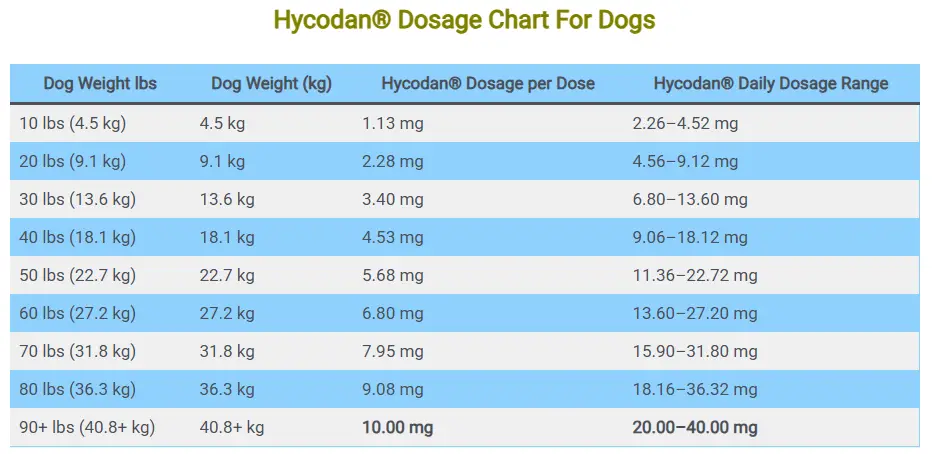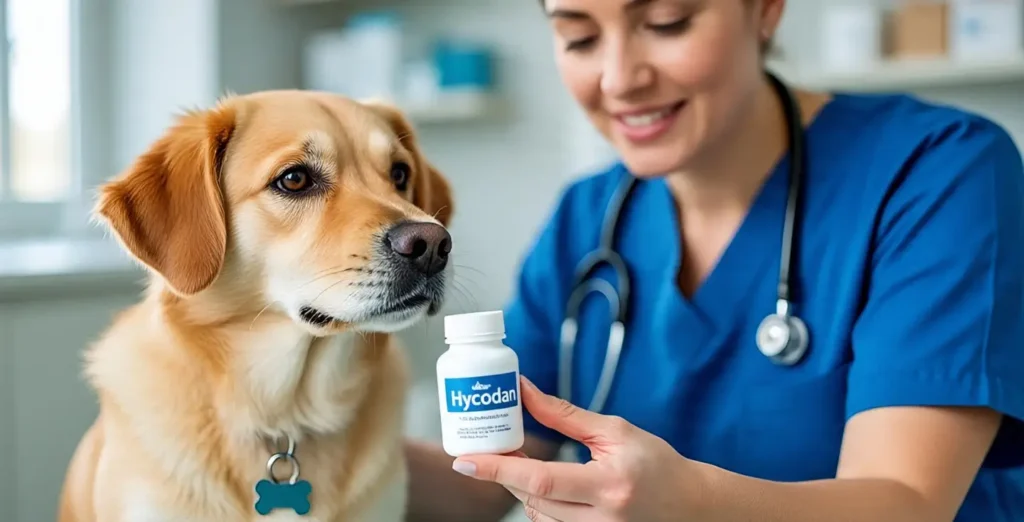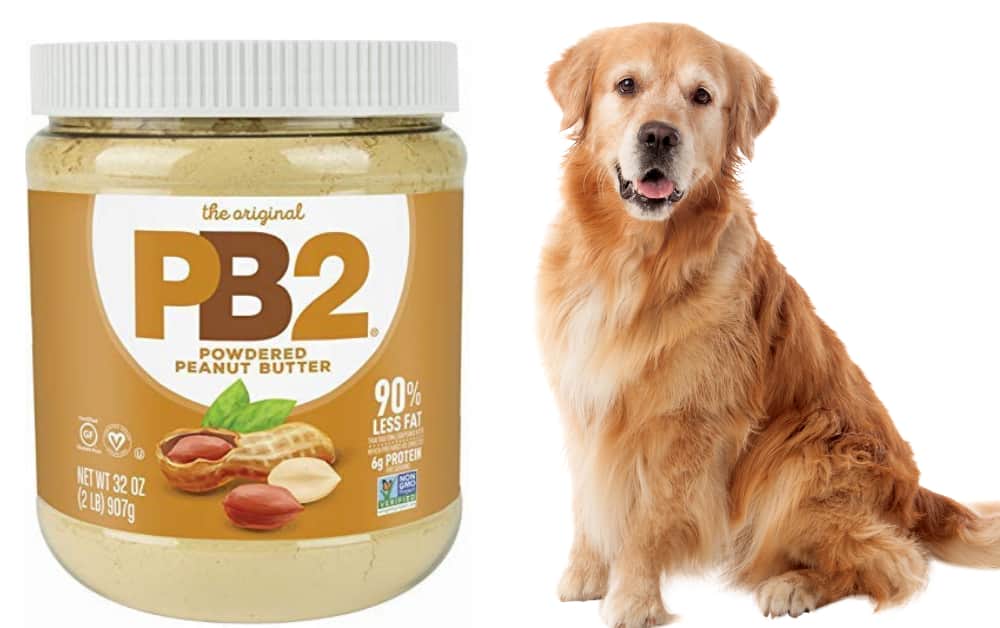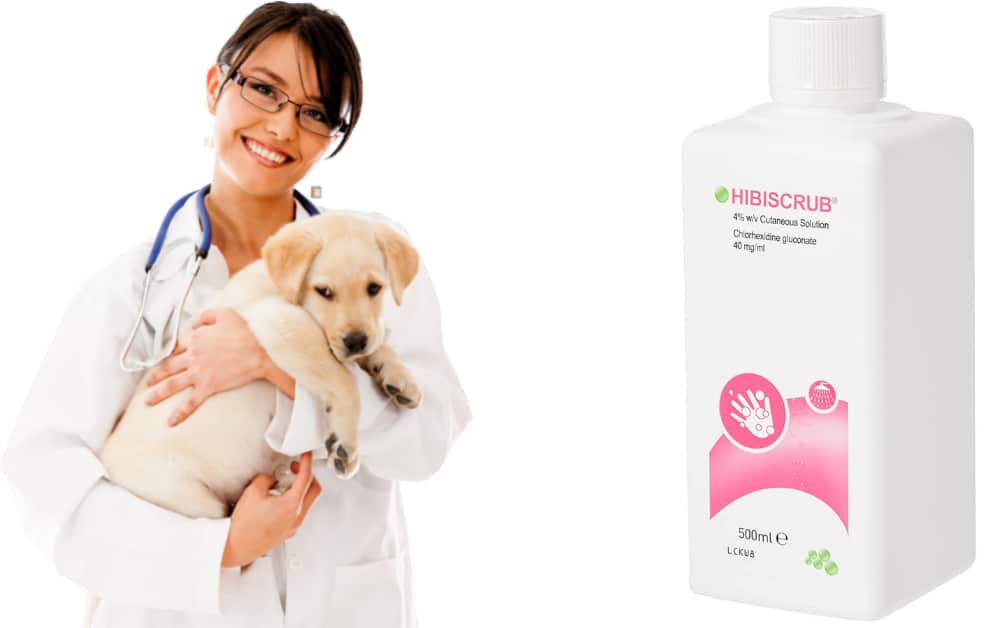Disclaimer: All the information in this guide is for educational purpose only. Before administering any medication to your dog, always consult with your veterinarian. They can recommend safer alternatives specifically formulated for canine use and appropriate for your pet’s specific health profile.
One of the medications that veterinarians sometimes prescribe to ease severe coughing in dogs is Hycodan® for dogs. This drug, which contains hydrocodone bitartrate, belongs to a class of cough suppressants (antitussives) and pain-relieving medications that act directly on the central nervous system. For dogs dealing with chronic coughing—whether from tracheal collapse, chronic bronchitis, or kennel cough—Hycodan® can provide relief by calming the overactive cough reflex that irritates their throat and lungs.
Unlike over-the-counter cough remedies for humans, Hycodan is a controlled prescription drug, meaning it must be prescribed by a veterinarian and dispensed by a licensed pharmacy. It’s not a medication you should ever give to your dog without professional guidance, since incorrect dosages or misuse can lead to serious side effects.
Another important thing to understand is that Hycodan® is not a cure for the underlying condition—it is a symptomatic treatment. In other words, it doesn’t eliminate infections, fix airway abnormalities, or reverse chronic disease. Instead, it helps make your dog more comfortable, prevents constant throat irritation, and allows better rest and recovery.
Hycodan® Dosage For Dogs
The recommended Hycodan® dosage for dogs is 0.25 mg/kg administered orally (PO) every 6–12 hours under strict veterinary supervision. This canine cough suppressant and pain reliever requires precise weight-based dosing – for example, a 20-kg dog would receive 5 mg per dose (0.25 mg/kg × 20 kg). Never exceed 10 mg per dose regardless of weight.
Hycodan® Dosage Chart For Dogs
| Dog Weight lbs | Dog Weight (kg) | Hycodan® Dosage per Dose | Hycodan® Daily Dosage Range |
|---|---|---|---|
| 10 lbs (4.5 kg) | 4.5 kg | 1.13 mg | 2.26–4.52 mg |
| 20 lbs (9.1 kg) | 9.1 kg | 2.28 mg | 4.56–9.12 mg |
| 30 lbs (13.6 kg) | 13.6 kg | 3.40 mg | 6.80–13.60 mg |
| 40 lbs (18.1 kg) | 18.1 kg | 4.53 mg | 9.06–18.12 mg |
| 50 lbs (22.7 kg) | 22.7 kg | 5.68 mg | 11.36–22.72 mg |
| 60 lbs (27.2 kg) | 27.2 kg | 6.80 mg | 13.60–27.20 mg |
| 70 lbs (31.8 kg) | 31.8 kg | 7.95 mg | 15.90–31.80 mg |
| 80 lbs (36.3 kg) | 36.3 kg | 9.08 mg | 18.16–36.32 mg |
| 90+ lbs (40.8+ kg) | 40.8+ kg | 10.00 mg | 20.00–40.00 mg |
Dosage Guidelines for Hycodan® in Dogs
Because Hycodan contains an opioid (hydrocodone), dosing is extremely sensitive. Veterinarians calculate the dose based on the dog’s body weight, overall health, and the severity of coughing.
The general rule is that hydrocodone is dosed in milligrams per kilogram (mg/kg) of body weight. For most canines, the dosage range is typically 0.22 mg/kg every 6–12 hours, though the exact amount may vary depending on the case.
Some important points about dosage:
- Veterinary Supervision is Mandatory – Hycodan® is a controlled substance and should never be administered without a prescription.
- Formulation Matters – Hycodan is available as tablets and oral syrup. The syrup is easier to dose for small dogs, while tablets may be better for larger breeds.
- Dosing Frequency – Most dogs require the medication every 8–12 hours to maintain steady relief.
- Weight-based Dosing – Since toy breeds weigh just a few pounds, their dosage may be as tiny as a few drops of syrup, while large dogs may need a full tablet.
Owners must use extreme caution—never “eyeball” a dose. Always use the dosing syringe or pill cutter provided by the vet or pharmacist. Even a small overdose can cause dangerous respiratory depression in canines.
Conditions Treated with Hycodan® in Canines
Hycodan is not a “catch-all” medication but rather one prescribed for specific conditions where cough suppression is necessary. Veterinarians may recommend it for:
1. Chronic Bronchitis
Dogs with long-term bronchitis often experience persistent, dry, hacking coughs. These coughs may not serve any useful purpose (like clearing mucus) and only worsen airway inflammation. Hycodan® helps reduce the frequency and intensity of coughing, improving the dog’s quality of life.
2. Tracheal Collapse
Small breeds like Chihuahuas, Pomeranians, and Yorkies are prone to tracheal collapse, where the windpipe weakens and flattens during breathing. This leads to the classic “honking cough.” Hycodan® helps break the cycle of irritation and coughing fits, although it doesn’t correct the structural issue.
3. Kennel Cough (Bordetella or other infectious causes)
While kennel cough is often self-limiting, some dogs suffer from severe, relentless coughing that keeps them awake at night and prevents healing. In these cases, Hycodan® may be prescribed alongside antibiotics or other supportive care.
4. Other Respiratory Disorders
In some cases, Hycodan® may be used in laryngeal paralysis, pulmonary fibrosis, or airway inflammation when coughing becomes more harmful than helpful.
It’s worth noting that veterinarians only prescribe Hycodan® when the cough is non-productive—meaning there is no beneficial mucus that the dog needs to expel. Suppressing a productive cough could trap secretions in the lungs and worsen infections.
Additionally, while Hycodan® is occasionally used for its pain-relieving properties, it is not a first-line pain medication for dogs. It’s primarily valued for its strong cough-suppressing abilities.
Side Effects of Hycodan® in Dogs
Like any medication, Hycodan® comes with potential side effects. Because it is an opioid-based drug, the side effects primarily affect the central nervous system and gastrointestinal system. While many dogs tolerate the medication well, pet parents should always keep an eye out for unusual changes after administration.
Common Side Effects
- Sedation or Drowsiness – The most typical effect is sleepiness. Many dogs will appear calmer or more relaxed than usual. While mild drowsiness is normal, excessive lethargy could mean the dosage is too high.
- Constipation – Opioids slow down the gastrointestinal tract, which can lead to constipation. Dogs may strain while defecating or have reduced bowel movement frequency.
- Reduced Appetite – Some dogs may eat less while on Hycodan®.
- Vomiting or Nausea – Stomach upset is less common but can occur, especially if given on an empty stomach.
Serious Side Effects (Require Immediate Vet Attention)
- Respiratory Depression – If a dog’s breathing becomes slow, shallow, or labored, it may indicate an overdose or sensitivity to hydrocodone.
- Extreme Sedation – A dog that is nearly unresponsive, cannot stand, or shows signs of confusion needs urgent veterinary care.
- Allergic Reactions – Although rare, swelling of the face, difficulty breathing, or hives require emergency treatment.
- Cardiac Concerns – In dogs with pre-existing heart conditions, Hycodan® can sometimes worsen symptoms due to its sedative effects.
Symptoms of Hycodan® Overdose
- Extreme lethargy or unconsciousness – Dog is difficult to wake or unresponsive.
- Slow, shallow breathing – Respiratory depression is the most dangerous overdose symptom.
- Pinpoint pupils – Just like in humans, opioids can constrict a dog’s pupils.
- Low heart rate (bradycardia) – Weak or slow pulse.
- Seizures or tremors – In severe cases, overdose can trigger seizures.
- Collapse – A dog may suddenly lose consciousness.
What to Do if You Suspect Overdose
- Call your veterinarian or emergency vet immediately.
- Provide details on how much medication was ingested and when.
- Do not attempt home remedies unless specifically instructed by a vet.
- In a clinical setting, vets may use naloxone, an opioid antidote, to reverse the effects.
Prompt medical care is crucial—opioid overdoses can be fatal without treatment. That’s why accurate measuring and responsible storage are essential whenever your dog is prescribed Hycodan®.
Canines Who Should Not Take Hycodan®
- Puppies under 6 months – Their systems are too sensitive to handle strong opioids.
- Dogs with liver or kidney disease – These organs metabolize and clear the drug. Impaired function can cause dangerous accumulation.
- Pregnant or nursing dogs – The drug can cross the placenta or be passed through milk.
- Dogs with breathing difficulties – Since Hycodan® can depress breathing, it should not be given to dogs already struggling with low oxygen levels.
- Dogs with a productive cough – If the cough is helping clear mucus or infection, suppressing it could worsen the illness.
Drug Interactions
Hycodan® can interact with other medications, including:
- Sedatives (diazepam, trazodone, acepromazine)
- Other opioids (tramadol, morphine)
- Antihistamines (diphenhydramine, hydroxyzine)
- Certain antibiotics and antifungal drugs
Mixing medications without professional guidance can lead to dangerous central nervous system depression. Always tell your vet about all supplements and medications your dog is taking.
FAQs
Can I give my dog human Hycodan®?
Yes, but only under veterinary supervision. Human formulations may have concentrations or additives that need careful adjustment. Never dose on your own.
How long does it take for Hycodan® to work?
Most dogs experience relief within 30–60 minutes, and the effects last 4–6 hours.
Can Hycodan® cure my dog’s c
No. Hycodan® only suppresses the cough reflex. The underlying condition (infection, tracheal collapse, etc.) must be treated separately.
Is Hycodan® safe for long-term use
In some cases, yes—dogs with chronic tracheal collapse or bronchitis may stay on Hycodan® for months. However, ongoing veterinary monitoring is essential.
What should I do if I miss a dose?
Give it as soon as you remember, unless it’s almost time for the next dose. Never double up.











![Can Dogs Eat Blood? 7 Side Effects [Expert Opinion]](https://petskor.com/wp-content/uploads/2022/04/Webp.net-resizeimage-12.jpg)
